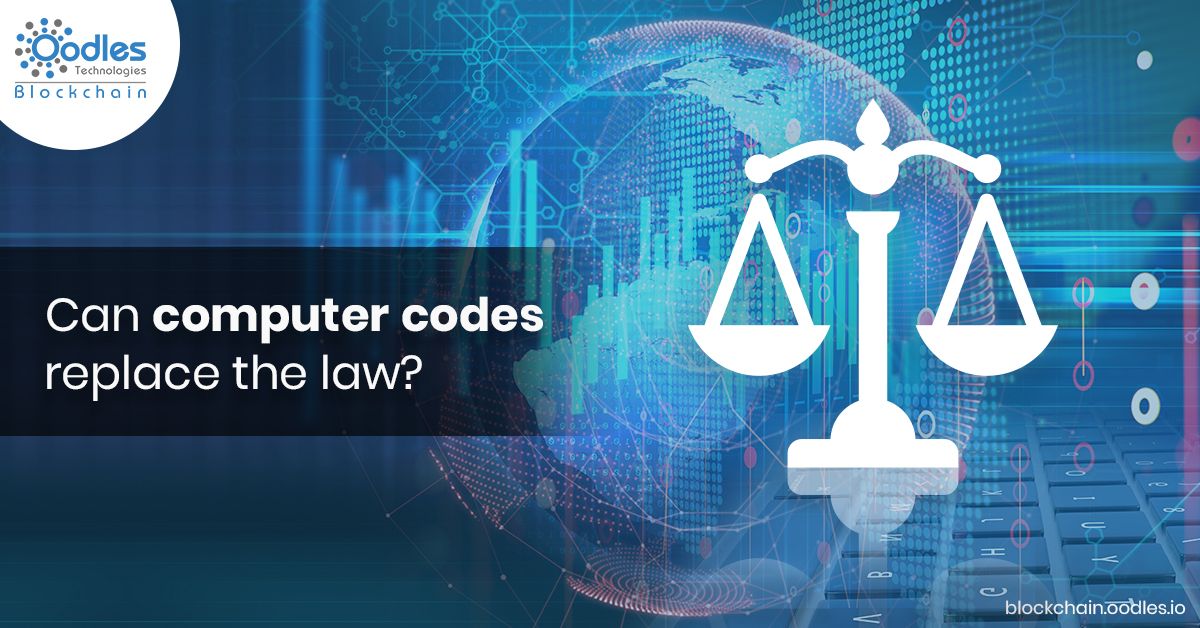-
Smart contracts represent one of the most transformative innovations to emerge in the blockchain and cryptocurrency space. Smart contract development allows developers and businesses to automate agreements, streamline processes, and minimize the need for intermediaries—ultimately unlocking new efficiencies and expanding the possibilities of decentralized applications (dApps). Deploying a smart contract is the process of placing the code for these automated agreements onto a blockchain network so that it becomes publicly accessible, immutable, and self-executing according to its coded rules. Despite sounding straightforward, smart contract deployment can be a nuanced, challenging, and intricate process that requires both conceptual understanding and practical know-how.
This blog post provides an in-depth exploration of everything you need to know about smart contract deployment. From the core concepts underlying smart contracts, to best practices and deployment tools, to security considerations and frequently asked questions, this comprehensive guide walks you through every step of the process. Whether you are new to blockchain technology or an experienced developer exploring advanced smart contract frameworks, this post will help you level up your knowledge and confidently prepare for the journey of smart contract deployment.
By the end of this article, you will:
- Understand what smart contracts are and why they matter.
- Recognize the various blockchain platforms that support smart contract deployment.
- Learn how to write and test smart contracts using popular languages like Solidity.
- Explore multiple deployment strategies and tools, including Truffle, Hardhat, Remix, and more.
- Gain insights into security concerns and best practices to mitigate risks.
- Review real-world examples of use cases and discover how to take your project to a production environment.
- Get answers to some of the most frequently asked questions around smart contract deployment.
Let's dive into the world of smart contracts and learn how to deploy them effectively, safely, and in a way that best suits your specific needs.
What Are Smart Contracts?
Smart contracts are self-executing programs or pieces of code that run on decentralized networks such as Ethereum, Binance Smart Chain (BSC), Polygon, and others. Unlike traditional agreements, which rely on external enforcement, smart contracts enforce the terms and conditions automatically once predefined criteria are met. They remove the need for intermediaries—lawyers, banks, and other third parties—to guarantee the fulfillment of contractual obligations. Instead, the code enforces the rules, drastically reducing costs and potential points of failure.
Key Aspects of Smart Contracts
Immutability: Once deployed, a smart contract's code generally cannot be altered, ensuring the rules remain consistent and transparent.
Transparency: Anyone can view the publicly deployed contract's source code (if published) and track its execution on the blockchain.
Automation: Smart contracts run automatically when triggered by blockchain transactions or certain events.
Trustless Execution: Participants do not need to trust each other; the contract's code is the ultimate authority.The concept of a “smart contract” was first proposed by Nick Szabo in the 1990s, long before blockchain technology gained widespread attention. However, it wasn't until the creation of Ethereum in 2015 that smart contracts saw practical, large-scale adoption. Ethereum was the first blockchain to offer a “Turing-complete” programming environment, enabling developers to create complex decentralized applications. Soon, other platforms followed suit, providing new smart contract capabilities and broadening the development ecosystem.
Also, Read | Creating Cross-Chain Smart Contracts with Polkadot and Substrate
Why Deploy Smart Contracts?
Deciding to deploy a smart contract is often motivated by the desire to leverage the unique benefits blockchain offers: decentralization, transparency, and automation. Smart contracts introduce efficiency gains and can be used to tokenize assets, manage permissions, create dynamic financial applications, and more. Here are some common reasons why organizations and developers choose to deploy smart contracts:
Eliminating Intermediaries: By coding logic directly on a blockchain, you remove or reduce the need for third parties, diminishing both costs and potential delays.
Enhanced Security: Well-audited, properly built smart contracts can provide tamper-proof execution. Once deployed, the code becomes transparent, immutable, and resistant to censorship or shutdown.
Cost-Effectiveness: While the initial deployment and transaction fees vary, ongoing operational expenses can be lower than maintaining complex server infrastructure or paying intermediaries.
Trustless Environment: Parties in the agreement do not need to trust each other, as the contract's code is the deciding entity. This is particularly beneficial in multinational or multi-stakeholder scenarios where trust can be difficult or expensive to establish.
Global Reach and Accessibility: Deployed on public blockchains, these contracts can be accessed from anywhere, making them a suitable foundation for distributed applications and services.In addition to these core advantages, the rapid growth of DeFi (decentralized finance), NFTs (non-fungible tokens), and DAOs (decentralized autonomous organizations) has continued to drive interest in smart contract development and deployment. With the evolving landscape, it is likely that new and creative use cases will continue to emerge.
Popular Blockchains for Smart Contracts
Though Ethereum is the most well-known blockchain for smart contract deployment, it's certainly not the only one. The blockchain ecosystem has matured considerably, and many alternative platforms now offer distinct advantages such as faster transaction speeds or lower fees. Here are some major blockchains that support smart contracts:
Ethereum
Ethereum pioneered the Turing-complete smart contract environment and continues to hold the largest developer community, largest ecosystem of decentralized applications, and highest total value locked in DeFi projects. Its native currency is Ether (ETH), which is used to pay “gas” fees for contract executions. Ethereum provides a robust ecosystem, but it has historically faced challenges with high gas fees and network congestion. The transition to Ethereum 2.0 aims to alleviate many of these issues.
Binance Smart Chain (BSC)
Developed by Binance, BSC is Ethereum Virtual Machine (EVM)-compatible, allowing Ethereum smart contracts to be easily ported to or built on BSC. It often offers lower transaction fees and faster block times compared to Ethereum, making it popular among certain DeFi and NFT projects. However, it is criticized by some for potential centralization due to its limited set of validators.
Polygon
Polygon (formerly Matic Network) is a layer 2 scaling solution built on top of Ethereum. By providing faster transactions and lower fees than Ethereum's main chain, it helps developers create scalable decentralized applications. Polygon's interoperability with Ethereum makes it a popular choice for projects seeking to reduce operational costs without sacrificing the Ethereum ecosystem's benefits.
Solana
Solana is known for its high throughput, claiming to handle thousands of transactions per second (TPS). It uses a different approach from Ethereum's EVM and relies on a mechanism known as Proof of History (PoH). Smart contracts in Solana are typically written in Rust, making it an attractive option for developers experienced with that language.
Avalanche
Avalanche is another high-performance blockchain that supports multiple virtual machines, including the Ethereum Virtual Machine. It offers sub-second finality and can be configured with different consensus mechanisms. Developers often choose Avalanche for its flexibility and potential speed.
Fantom
Fantom is a fast, scalable, and EVM-compatible blockchain that uses a leaderless Proof-of-Stake protocol. It focuses on near-instant transfers and higher throughput, making it a potential platform for various DeFi projects.
These are only a handful of the many emerging platforms. The choice of blockchain often depends on factors like transaction fees, developer tooling, community support, consensus mechanisms, decentralization preferences, and more. No platform is universally the “best”—the decision is always context-dependent.
Also, Check | Optimism Platform: Developing and Implementing Layer 2 Smart Contracts
Foundations of Smart Contract Development
Before you can deploy a smart contract, you need to create one. Smart contract development typically involves the following phases:
- Planning and Modeling
- Choosing a Language and Framework
- Coding
- Compilation
- Testing
- Deployment
Planning and Modeling
Your first step should always be to carefully plan what your smart contract is supposed to do and how it will fulfill those goals. Ask yourself:
- What core functionality does it need?
- How will users interact with it?
- What data will it store and how?
- Which blockchain environment is most appropriate?
- What are the security implications?
Sketching out state diagrams, event flows, and user interactions can help you conceptualize your contract's structure. Establishing clear acceptance criteria is also crucial, because once deployed, altering a contract's logic can be cumbersome (or impossible) without advanced upgrade patterns.
Choosing a Language and Framework
Ethereum's primary smart contract language is Solidity, though newer languages like Vyper (a Pythonic approach) are also used. For alternative blockchains, you might use Rust (Solana), C++ (EOS), Go (Hyperledger Fabric), or other languages. The choice typically depends on the platform's recommended or native language and your development background.
Many frameworks facilitate the development and deployment of smart contracts:
- Truffle (Ethereum & EVM-compatible)
- Hardhat (Ethereum & EVM-compatible)
- Embark (Ethereum & EVM-compatible)
- Anchor (Solana)
- Brownie (Python-based, Ethereum & EVM-compatible)
Each framework has its unique strengths, supporting tasks like compiling, testing, local blockchain simulation, migrations, and contract interaction scripts.
Coding
While coding, developers use the chosen language (e.g., Solidity) to write the smart contract's functionality. For instance, in Solidity, you define contract classes, specify functions, and manage state variables:
<pre><code>pragma solidity ^0.8.0; contract MyContract { uint public storedData; constructor(uint initialValue) { storedData = initialValue; } function set(uint x) public { storedData = x; } } </code></pre>This simple example demonstrates how to store and update a value. Real-world smart contracts will likely have more complex logic, with multiple state variables, event emissions, and possibly external calls.
Compilation
Once written, your smart contract code must be compiled into bytecode to run on the chosen blockchain's virtual machine. Tools like the Solidity compiler (solc) handle the process, converting your high-level language code into low-level instructions. Frameworks such as Truffle or Hardhat automatically configure the compiler settings for you and generate artifacts that can be deployed.
Testing
Testing is a fundamental step in your development process. You'll typically run unit tests, integration tests, and possibly property-based tests against a local or test blockchain. Testing ensures your contract behaves as expected under various conditions. Common libraries like Truffle's built-in testing framework (with Mocha/Chai) or Hardhat's testing environment (with JavaScript or TypeScript) streamline this process.
Deployment
Finally, you'll proceed to deployment once you are confident in your contract's correctness. This involves sending a transaction (with your compiled bytecode) to the blockchain network, funded by your account's native cryptocurrency (gas fees in Ethereum, for example). After the deployment transaction is mined and confirmed, the contract receives a unique address on the blockchain, enabling anyone to interact with it subject to its encoded rules.
Also, Discover | How to Scale Smart Contracts with State Channels
Tools and Frameworks for Deployment
Many specialized tools exist to make the deployment process more efficient, reliable, and aligned with DevOps' best practices. Here is a look at some popular smart contract deployment tools:
Truffle Suite
Truffle is one of the oldest and most comprehensive Ethereum development frameworks. It offers:
- Truffle (command-line tool): For compiling contracts, running migrations, testing, and deployments.
- Ganache: A personal blockchain for testing and development.
- Drizzle: A collection of front-end libraries for building dApps.
Truffle allows you to write migration files, which are essentially scripts that specify how and in which order your contracts get deployed. You can easily migrate to local test networks (e.g., Ganache), official testnets (e.g., Ropsten, Goerli), or the mainnet.
Hardhat
Hardhat is another widely used Ethereum development environment. It has:
- A powerful task runner that can be customized.
- Built-in support for a local development network.
- Extended debugging capabilities (e.g., console.log in Solidity).
- Plugins for integration with other tools like Ethers.js, Waffle, TypeChain, and more.
Hardhat's flexible plugin architecture and improved debugging tools have made it a favorite among many modern developers.
Remix IDE
Remix is a browser-based IDE for writing, testing, and deploying Solidity smart contracts. It is straightforward and requires no installation. Remix integrates a web-based compiler, built-in testing features, and direct deployment to networks like Ropsten, Ethereum mainnet, or local blockchains. It is particularly useful for smaller projects, educational purposes, or quick prototyping.
Brownie
Brownie is a Python-based framework for Ethereum smart contract development. It uses the Pytest framework for testing and integrates seamlessly with web3.py. If you are more comfortable with Python than JavaScript, Brownie offers a powerful alternative.
Anchor
For Solana, Anchor is the go-to framework. It simplifies Rust-based Solana program development and includes a testing framework that simulates execution on a local Solana cluster.
Other Notable Mentions
Embark: An older framework focused on full-stack DApp development.
OpenZeppelin CLI: Provides tooling for deploying and managing upgradeable smart contracts, especially beneficial for enterprise-grade projects.Each tool has its strengths and weaknesses. Selecting the right one depends on your language preferences, the blockchain you target, the complexity of your project, and personal comfort with the toolchain.
Also, Explore | Build a Secure Smart Contract Using zk-SNARKs in Solidity
Pre-deployment Checklist
Deploying a smart contract is an irreversible operation once it is on a public network. You cannot simply take it down or modify it at will. Therefore, careful preparation is critical to mitigate potential issues and ensure your contract functions as intended. Below is a handy checklist you might consider before final deployment:
- Thorough Testing: Have you tested the contract thoroughly in your local environment, testnets, or using ephemeral blockchains (e.g., Ganache)?
- Code Review and Audits: Have peers or professional auditors reviewed your code for logical errors, vulnerabilities, or inefficiencies?
- Version Control and Documentation: Is your smart contract code version-controlled (e.g., Git) and well-documented?
- Cost Estimation: Have you estimated gas costs for deployment and function execution? Are you prepared to pay the required fees?
- Network Selection: Do you know whether to deploy on a mainnet, sidechain, or layer 2 solution? Have you tested the correct environment?
- Access Controls and Permissions: Have you restricted certain functions to authorized accounts or roles only?
- Fallback Mechanisms: Do you have a plan or fallback if something goes wrong? For instance, do you need an upgradeable contract architecture?
- Final Parameters: Have you set any final configuration values, such as initial supply in a token contract or addresses of external oracles?
This pre-deployment preparation can significantly reduce the risk of costly mistakes in production.
Testing and Auditing
Smart contract testing is vital. Because deployment is often permanent, a single bug can lead to catastrophic consequences—loss of user funds, locked tokens, or complete compromise of your system.
Types of Testing
- Unit Testing: Involves testing individual functions or small modules in isolation.
- Integration Testing: Tests interactions between multiple contracts or modules.
- End-to-End Testing: Testing the entire workflow of your application, from front-end to blockchain transactions.
- Fuzz Testing / Property-Based Testing: Random inputs are fed to your contract to detect potential edge cases or unexpected behaviors.
Security Audits
A security audit is an extensive review of your smart contract code by a specialized firm or experienced auditor. They look for:
- Re-entrancy attacks
- Integer overflow/underflow (less common with Solidity 0.8+ but still relevant)
- Unauthorized access to privileged functions
- Logic bugs and faulty assumptions
- Gas optimization opportunities
While audits can be expensive, for high-stakes projects (especially those that manage significant funds), the cost is justified. Post-audit, you will often receive a report detailing found vulnerabilities and recommendations for fixing them.
Formal Verification
Formal verification employs mathematical methods to prove or disprove the correctness of your contract's logic. Though more complex and not always required for every project, formal verification can be beneficial when dealing with mission-critical, high-value contracts like stablecoins or large DeFi protocols.
You may also like | Multi-Level Staking Smart Contract on Ethereum with Solidity
Deployment Process Explained
While the specifics may vary depending on your chosen framework or blockchain, the core deployment process generally looks like this:
- Compile the Contracts: Use your framework's compiler to transform Solidity (or any other language) code into bytecode.
- Configure Deployments: Adjust the deployment scripts to specify which contracts to deploy, the parameters for constructor functions, and the network to deploy to.
- Fund the Deployer Account: Ensure the account that will send the deployment transaction has sufficient cryptocurrency to pay for network gas fees.
- Run the Deployment Command: In tools like Truffle, this might be `truffle migrate --network mainnet`. In Hardhat, you might run `npx hardhat run scripts/deploy.js --network mainnet`.
- Verify Success and Note the Address: Once mined, you will receive a transaction hash and contract address. Verify on a block explorer (e.g., Etherscan, BscScan) to ensure the contract is live.
- Optional Verification of Source Code: Tools like Hardhat or Truffle can automatically help you verify your source code on Block Explorers. Verification improves transparency and trust, as users can see the exact code compiled and deployed.
Below is an example Hardhat deployment script in JavaScript for a simple token:
<pre><code>const { ethers } = require("hardhat"); async function main() { const MyToken = await ethers.getContractFactory("MyToken"); const myToken = await MyToken.deploy("My Custom Token", "MCT", 1000000); await myToken.deployed(); console.log("MyToken deployed to:", myToken.address); } main() .then(() => process.exit(0)) .catch(error => { console.error(error); process.exit(1); }); </code></pre>Running `npx hardhat run scripts/deploy.js --network mainnet` will deploy the MyToken contract to the specified network, given that you have properly configured the network settings in your Hardhat config file and funded the deployer wallet.
Best Practices and Security Considerations
Use Standardized Libraries
Leverage well-reviewed, open-source libraries like OpenZeppelin for ERC-20, ERC-721, and other token standards. These libraries have been battle-tested by the community and significantly reduce the chance of introducing vulnerabilities.
Keep Code Simple
Smart contract code must be secure and minimal. Complex logic can open doors to exploits and increase the difficulty of auditing. Always aim for simplicity and clarity.
Principle of Least Privilege
Restrict functions so they can only be executed by authorized roles. Avoid leaving default “owner” powers in production if they are not necessary.
Upgradeable Contracts (If Needed)
Immutable smart contracts are the norm, but if you anticipate needing to fix or add features later, consider using proxy or upgradeable contracts. This approach can add complexity and security considerations, so weigh the trade-offs carefully.
Monitor and Maintain
Deploying a contract does not mark the end of the journey. Continuously monitor on-chain activity, check for anomalies, keep the private keys of privileged accounts secure, and respond quickly to any discovered vulnerabilities.
You may also like | How to Write and Deploy Modular Smart Contracts
Real-World Use Cases and Examples
Smart contract deployment has practical applications across various industries:
DeFi (Decentralized Finance):
Lending platforms, decentralized exchanges (DEXs), yield farming protocols, stablecoins, and derivatives all rely on complex smart contracts to handle billions of dollars in assets with minimal human intervention.
NFT Marketplaces:
Creating and trading non-fungible tokens representing art, collectibles, gaming items, and virtual real estate. Ethereum-based platforms like OpenSea, Rarible, and Foundation popularized NFTs, but other chains also support them.
DAOs (Decentralized Autonomous Organizations):
Governance structures are coded as smart contracts that enable stakeholders to vote on proposals and manage shared treasuries in a decentralized manner.
Supply Chain and Logistics:
Using blockchain to track goods, ensure authenticity, and automate processes such as payments once shipping conditions are met.
Gaming and Metaverse Applications:
Enabling in-game economies, ownership of digital items, and metaverse assets (land, avatars, clothing) on the blockchain.
Identity and Access Management:
Issuing verifiable credentials, managing permissions, and authenticating users in trustless environments.
Tokenization of Real-World Assets:
Real estate, stocks, precious metals, and other assets can be tokenized as ERC-20 or other token standards for fractional ownership and easy global transfers.
When deploying real-world projects, you must carefully consider user experience, regulatory implications, privacy, and various other non-technical constraints. Smart contracts are only one piece of the overall puzzle.
Also, Discover | How to Create a Smart Contract for Lottery System
FAQ (Frequently Asked Questions)
Q1: Do I always need to pay gas fees to deploy a smart contract?
A: Yes, on public blockchains like Ethereum, you must pay gas fees using the network's native currency (ETH on Ethereum). The amount varies depending on network congestion, contract complexity, and size.Q2: Can I edit or remove a smart contract after deployment?
A: Typically, no. Smart contracts on most public blockchains are immutable once deployed. You can code upgrade mechanisms into your design—using proxy patterns or upgradeable frameworks—but the base concept of immutability remains unless you explicitly implement an upgrade approach.Q3: How do I choose between Ethereum and an alternative chain?
A: Consider transaction fees, network throughput, community support, developer tools, and your project's specific needs. Ethereum boasts the largest ecosystem, but other chains may offer lower fees or faster transaction times.Q4: What about private or permissioned blockchains?
A: Private or permissioned blockchain networks—like Hyperledger Fabric or Quorum—allow more control over who can join and validate transactions. These are often used by enterprises for internal processes. They also support smart contracts (called “chaincode” in Hyperledger), but the trust model differs from public networks.Q5: How secure are smart contracts?
A: Smart contracts can be secure if designed and tested properly, but they're not inherently risk-free. Exploits can and do happen. Thorough testing, code reviews, and security audits are essential.Q6: Are there ongoing costs after deployment?
A: Storing data or executing functions in a deployed contract requires transaction fees. If other users call the contract, they pay for the gas. If your dApp or your backend calls it, you pay. You won't pay recurring fees for the contract's existence per se, but any interactions have transaction costs.Q7: Can I use open-source contracts for my project?
A: Yes. Many reputable smart contract libraries (e.g., OpenZeppelin) are open-source and can be integrated into your project. Always review and confirm the library's security track record and license before adoption.Q8: How do I verify my smart contract on a block explorer?
A: Most blockchain explorers have a verification feature. You typically provide the source code, compiler version, and optimization settings used during compilation. Tools like Hardhat or Truffle can help automate this process.Q9: Do I need a full node to deploy a smart contract?
A: Not necessarily. You can connect to a public node (e.g., Infura for Ethereum) or a managed service. If you're developing, you may use a local blockchain emulator (e.g., Ganache) for testing.Q10: What's the difference between a testnet and a mainnet?
A: A testnet is a blockchain used for testing (like Ropsten, and Goerli for Ethereum) with no real monetary value, allowing developers to experiment without incurring high fees or risking real funds. A mainnet is the official live network where transactions have real financial consequences.Also, Read | How to Access Private Data in Smart Contracts
Conclusion
Smart contract deployment is both an art and a science. It begins with understanding the fundamental concepts of decentralized technology, exploring viable blockchains, and mastering the languages and tools necessary to code self-executing agreements. From there, you need to thoroughly test, audit, and manage your code, ensuring it meets the highest standards of reliability and security before committing it to an immutable network.
Key takeaways from this guide include:
- Smart contracts offer trustless execution, transparency, and immutable logic.
- Ethereum introduced the concept of Turing-complete smart contracts, but many alternative blockchains now exist, each with unique trade-offs.
- Effective development tools (Truffle, Hardhat, Remix, Brownie) streamline the coding, testing, and deployment of contracts.
- A pre-deployment checklist and thorough auditing can help prevent costly mistakes.
- Security best practices—including code simplicity, least privilege, and the use of well-tested libraries—are crucial for safe smart contract deployment.
The real-world applications of smart contracts are vast—spanning finance, identity management, gaming, supply chain, and more.
As blockchain technology matures, deploying a smart contract increasingly resembles standard software deployment—yet important differences remain. Immutability, decentralized governance, and the public nature of blockchains mean that every step must be approached meticulously. By following best practices, leveraging the right tools, and nurturing a deep understanding of smart contract security, you can confidently deploy code that drives truly decentralized applications and helps shape the future of digital innovation.
Smart contracts stand as a testament to the power of trustless, transparent, and automated systems. Whether you are creating a new token, building a sophisticated DeFi protocol, or simply experimenting with blockchain technology, your journey toward deploying a smart contract is an important step into a broader landscape of possibility. With that in mind, continue to learn, experiment on testnets, engage with the community, and adopt best practices. The result will be robust, secure contracts that deliver value to users and help pave the way for widespread blockchain adoption.
Now, armed with this comprehensive guide, go forth and deploy your next smart contract with confidence. The world of decentralized applications awaits! If you are looking to build your decentralized project, connect with our experienced smart contract developers to get started.

Our Offices
INDIA
Emaar Digital Greens, Sector 61,
Gurugram, Haryana
122011.
Welldone Tech Park,
Sector 48, Sohna road,
Gurugram, Haryana
122018.














